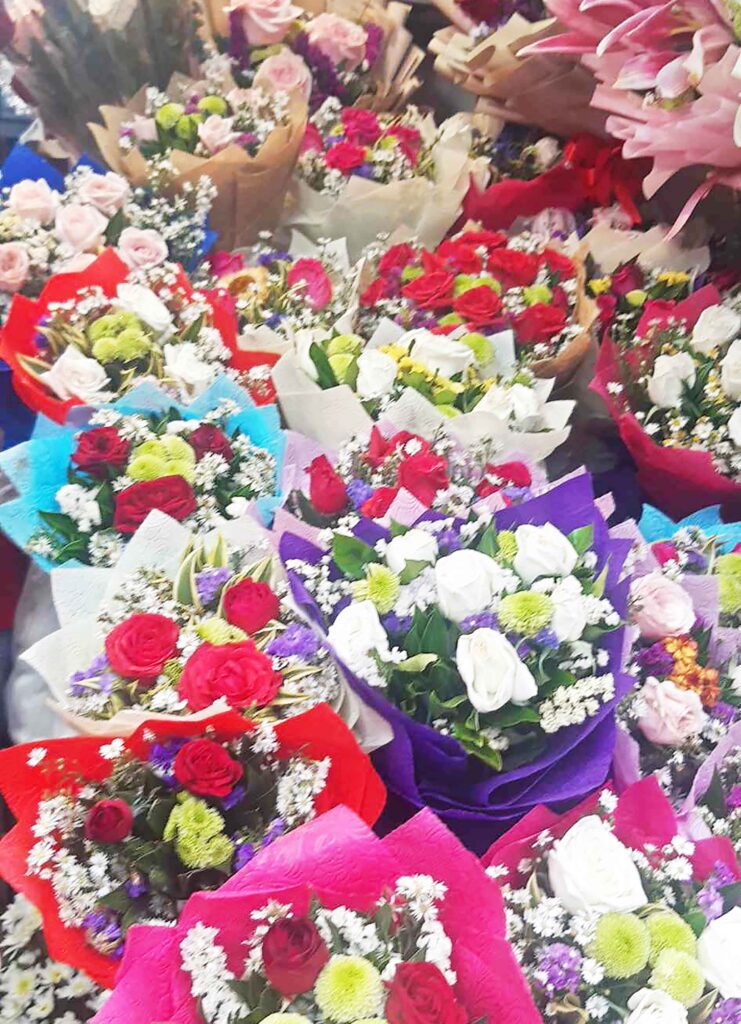On a bustling street near Marikina City Hall, Janna tends her flower stall, part of a thriving enterprise that has flourished in the same spot for six years. Across the street, students flock to buy crocheted roses for P100 per bouquet, while AMORE flower shop on Sparrow corner J. Chanyungco Streets reports sustained strong sales, particularly in deliveries that surged during the pandemic.
Valentine’s Day, has transformed from a simple celebration of romance into a major economic force. In 2023, global consumer spending reached $26 billion, the second-highest on record, as people expressed their affection through gifts and experiences.
In the Philippines, flowers remain the quintessential Valentine’s gift. Tet Mora launched her ManiWari to make flowers part of everyday life. “Many see flowers as a luxury, so we try to make them accessible as a daily treat.”


The hospitality industry sees a Valentine’s boom in romantic getaway bookings. Visa Consulting and Analytics reports higher transaction volumes for February 2024 compared to 2023, driven by increased card usage. In 2023, more than 88 percent of Filipinos celebrated Valentine’s Day, though many now embrace budget-conscious choices, favoring meaningful experiences over luxury items.
Consumer patterns show notable shifts. Visa’s analysis reveals that Filipinos spread their Valentine’s celebrations across weekends before and after February 14. Many buyers now gravitate toward personalized gifts and crafts, often using credit card rewards and discounts to manage expenses.
While traditional Valentine’s offerings like flowers and hotel stays maintain their appeal, the celebration increasingly reflects a preference for thoughtful, value-focused spending and memorable experiences. Businesses that understand these evolving consumer behaviors and adapt their strategies accordingly can maximize their success during this season of love.






